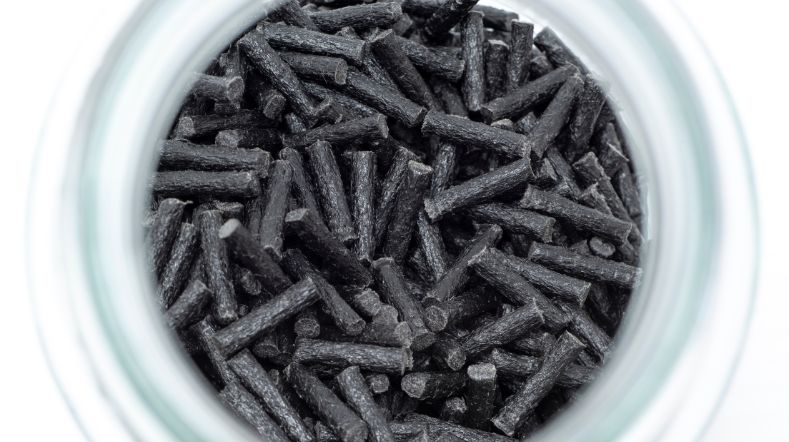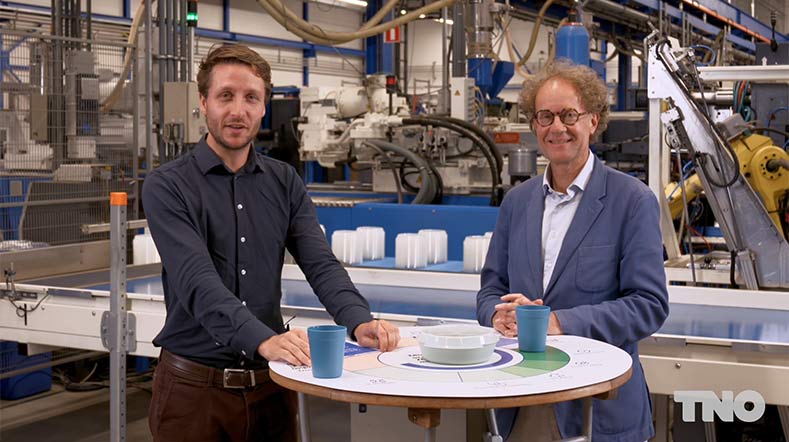Materials solutions
The development of materials plays a crucial role in achieving the sustainable development goals. Materials science and engineering contribute to various development goals by promoting sustainable practices, reducing environmental impact and fostering innovations.
We develop materials that facilitate and accelerate the transition towards a sustainable society; easy to recycle, smart functionality, energy saving, low environmental footprint, and significantly reduced critical or toxic substances to create a resilient infrastructure and sustainable industrialization.
Mitigating climate change through advanced materials
- Advanced materials are essential for renewable energy technologies such as energy storage systems.
- Sustainable materials development focuses on reducing waste, recycling and using renewable resources.
- Eco-friendly materials reduce pollution and protect ecosystems, contributing to the preservation of biodiversity.
- Innovations in materials such as carbon-neutral or carbon-negative materials help mitigate the climate change by reducing greenhouse gas emissions.
Applications and market domains
Our expertise is applied for the development of nano- and/or microstructured (multi-) functional polymer materials, nanoparticles, polymer composites and wet-chemical coatings for following 5 application/market domains:
-
Energy Conversion & Storage: materials that facilitate energy conversion and subsequent storage, with main focus on sunlight-powered production of chemicals and fuels. Prototypical product examples are a plasmonic TiO2-supported Au catalyst for sunlight-powered conversion of CO2 to CO, and photoelectrochemical materials and devices for solar water splitting for low cost and off grid production of green H2.
-
Sustainable Mobility: development of material and process technologies for thermoplastic composites (TPCs) to enable energy-efficient and sustainable material use in lightweight mobility applications. Reuse and recycling of thermoplastic composites are a key part of this. Prototypical product examples are polymer composite materials produced from 100% industrial waste streams, automotive components produced with 25% recycled TPC content, thus meeting EU regulations for the automotive sector, or lightweight components for aeronautic application enabling reduced fuel consumption.
-
Sustainable Buildings: innovative coatings and polymer films that lower the energy consumption of buildings, contribute to building-integrated generation of renewable energy or to circular use of building products. A prototypical example is an energy efficient thermochromic window, which transmits solar infrared radiation at temperatures below 20ºC, and blocks it at temperatures above 20ºC. This is established through application of a VO2-based thermochromic coating or film on position 2 of the window, viz. the inner side of the outer glass pane.
-
Circular Packaging: developing concepts and materials for increasing the recyclability of existing packaging (design-for-recycling), for re-use of existing packaging materials, and for increasing the recyclate content of packaging (design-from-recycling). One of the key expertises that are being developed is the sealing of packaging. Another expertise is improving the quality of the recycled material, for example by tuning the additives for prolonging the lifetime and recyclability of packaging materials.
-
Polymer Solutions: focusing on the quality of polymers in use and recycling relating to polymer ageing and degradation, formation of microplastics and the control of quality during processing. Polymer ageing involves physical ageing, chemical changes such as crosslinking during degradation of a thermoset, thermo-oxidation at elevated temperature and photochemical ageing, as occurs in weathering.
We develop methods and models to identify, predict and mitigate this quality loss of polymers. Microplastics are minuscule plastic particles. By studying the formation of microplastics during processing and use of polymer materials, we develop tailored solutions for minimizing microplastics release into the environment. And controlling the quality of polymers during processing using in-line sensing solutions enables an improved quality of plastic recyclate.
New exploratory application domains are:
- Replacement of Critical & Toxic Materials: a transformation in materials science by eliminating the reliance on critical and toxic substances creating a future where industries thrive on safe, sustainable, and high-performing alternatives. Prototypical examples are the development of fluorine free chemistry replacing hazardous fluorinated materials with safer alternatives (e.g., in semiconductor and electronics, fire-fighting foams, binders for cathodes), and the extraction and purification of critical raw material from waste streams for high quality products (e.g., vanadium from catalyst waste to application in smart windows).
- Sustainable Adhesives: Adhesives are used in many different industrial sectors, such as electronics, packaging, construction, aerospace, automotive, and composites. The requirements for adhesives in these applications are extremely demanding, which unfortunately means that current fossil based adhesives cannot be easily removed during “end of life” scenarios. This strongly limits separation and re-use of individual components from multi-component materials and devices at end of their lifetime.
Sustainable adhesives will bridge the gap between the demanding material requirements and “end-of-life” treatment and will enable recyclability of complex composite structures. Triggered release concepts will facilitate on demand bonding and de-bonding of adhesives for circularity. Goal is to progress towards zero waste adhesives for end-of-life with reversible bonding properties and produced from biobased rather than fossil feedstock.
Knowledge areas
The development of materials in these technology programs is based on following competences:
- Polymer science focuses on polymer processing, bulk properties, characterization, and chemistry, with applications such as sustainable adhesives and recycling.
- Colloid science involves the design and surface modification of nanoparticles.
- Interface science is concerned with the design and engineering of interfaces in polymer composites and improving sealing of plastic layers and reversible adhesives.
- Wet chemical coatings focusing on multifunctional and smart solution-based inorganic/sol-gel coatings.
- Heterogeneous catalysis includes the design and characterization of inorganic catalysts for various chemical processes.
- Materials modelling uses machine learning and simulation models to study structure-property relationships and optimize materials.
Facilities
We are experts in the development of (multi-) functional polymer materials, polymer composites, nanoparticles and wet-chemical coatings. We connect the high-tech ecosystem with the chemical industry with locations and collaborations at the High Tech Campus in Eindhoven and the Brightlands Chemelot Campus in Geleen.
We have facilities for material synthesis, processing, and characterization. These facilities include chemical reactors for lab- and pilot scale preparation of colloidal dispersions, equipment for producing and characterizing inorganic nano-pigments and reference microplastics, pilot lines for functional glass coatings and polymer films, and lab and pilot-scale equipment for polymer processing and recycling.
Additionally, the research group has dedicated equipment for additive manufacturing of fiber-reinforced composites, and various tools for structural, thermal, and optical characterization of materials. Extensive setups for validating the performance of photocatalysts and photoelectrochemical materials and devices are also available.
Get inspired
Thermoplastic composites


New method also considers environmental impact of microplastics


Microplastics and packaging: reduction is achievable


Time setters during the Ocean Race: a healthier world without microplastics





